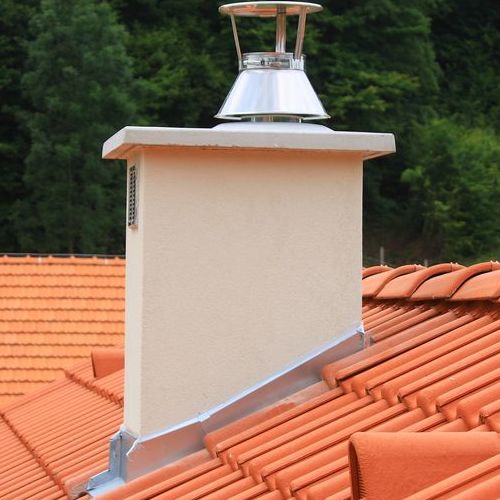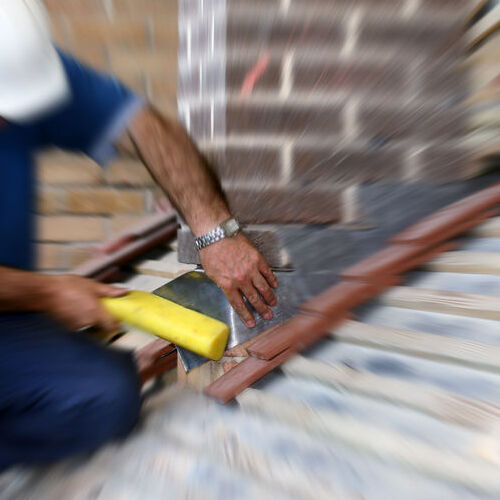
Is roof flashing necessary?
When we think of roofing, we normally think of shingles, and shingles are a primary component of your roof. Just as essential is the flashing. Roof flashing, usually made from metals like aluminum, copper, or steel, is flat and thin, and prevents water from getting under shingles. It’s often used around areas like chimneys, skylights, vents, or gutters or other areas of the roof that requires water runoff. It’s also essential at any point where the roof meets with sidewalls or front walls, vertical walls at the edge or behind the roof deck, as well as at the low points of roof slopes, or valleys, and along the roof’s edges. All of these areas leave shingles and underlayment vulnerable to water, so the flashing is necessary to prevent leaks.
When you need to repair or replace roof flashing in Canton, GA, get help from the experts at Affordable Gutters Plus LLC. We install and repair flashing at affordable prices. To schedule an estimate, give us a call at 770-735-4433.
How roof flashing works
Roof flashing is set up to protect various roofing components like chimneys from water damage and leaks. It keeps water from getting under the shingles, and is shaped in various ways depending on where it’s placed.
Chimneys, for instance, require flashing in several different areas. Continuous flashing runs along the bottom of the chimney, whereas step flashing runs up the sides. Cap flashing is lapped over the top of the other flashing to prevent seepage. Flashing is also placed at the top of the chimney so water will drain from the top. Continuous flashing is also used along vertical walls. Flashing is also placed around vents, skylights, and along drip edges and valleys.
How long should roof flashing last?
Your roof flashing should be some of the most durable material on your roof, especially if you have a traditional asphalt shingle roof. If you expect your roof to last 20 years, your flashing should last at least that long. If you have a metal roof, for instance, which can last 50 years or more, the flashing should last at least 50 years. Most flashing is made from rust-resistant metals like galvanized steel or aluminum so it will last as long as or longer than your roof.
How do you fix roof flashing?
When you get roof leaks, it’s usually due to damaged roof flashing. In some instances, repairing flashing can be a simple job for do-it-yourself types that can save you money at the same time. Here are some basic repairs and repair tips to help you with minor damage.
- Repair small holes or corroded spots by either plugging pinholes with roofing cement or patching holes of ¾-inch diameter with the same material as the flashing.
- Flashing seals can be repaired by chipping away old mortar and caulking the edges of the flashing. Special masonry caulk needs to be used to seal the joints between flashing and chimney.
- Vent pipe flashing can be replaced by prying the old flashing loose and positioning new flashing in its place. Nail it down so shingles will cover it, replace the shingles and cover nail heads with roofing cement.
- If you have severe corrosion or multiple holes or other similar damage, you will need to replace the flashing, which will require you to remove a large portion of the shingles. You may want to call a professional to replace the flashing in this case.
While roof leaks are commonly caused by damaged flashing, hard water and mineral build up can cause problems like leaks for your water heater requiring water heater repair.
Does flashing go over or under shingles?
When you are repairing or replacing roof flashing, generally your flashing should go over your shingles or other roofing material. Occasionally, with asphalt shingle roofs, an extra row of shingle tabs is placed over the flashing for aesthetic reasons. The main shingles, however, are still placed underneath the flashing. These additional shingles might be mistaken for a defect in a roof inspection, so if you are selling your home, you might want to alert the inspector if you are aware of this being the case on your roof.
Can you reuse roof flashing
Given that roof flashing tends to be made from durable materials like steel and aluminum, when you’re replacing your roof, you may consider reusing the flashing rather than replacing it. This, however, may not be a good idea if you want to preserve the integrity of the roof. It’s usually better to replace the flashing as well.
Reusing flashing can pose problems when installing a new roof. The nails, for instance, may not go into the same holes they were originally in, so new holes will need to be made. You might also discover as you begin replacing the roof that the original flashing wasn’t properly installed or may have been repaired frequently over time. The flashing may also have already been reused several times and may be worn or in disrepair.
Roof flashing and gutters
Drip-edge flashing or gutter flashing should be installed along with other flashing. This type of flashing keeps water from running under the shingles at the edge of the roof. It’s also used to protect the fascia boards from dripping water. This flashing sends water to the gutters but also keeps water from dribbling behind them. That protects wood behind the gutters from dry rot, and prevents the gutters from coming loose.
How much does it cost to replace flashing on a roof?
Costs to replace roof flashing will be affected by various factors. A significant issue affecting will be the type of roof you have and the types of other repairs you may need. For flashing around your skylights, you can expect to pay anywhere from $300 to $500 for each, while flashing around your chimney will cost anywhere between $200 to $500. Large or multi-flue chimneys could cost as much as $1,500 to replace the flashing. You may have to pay for repairs to shingles or other roofing components as well, which will affect the cost of the flashing replacement.

Roof flashing repair near me
If you need to repair your roof flashing in Canton, GA, get in touch with the professionals at Affordable Gutters Plus LLC. We offer competitive prices on repairs. Give us a call at 770-735-4433 to find out more.

